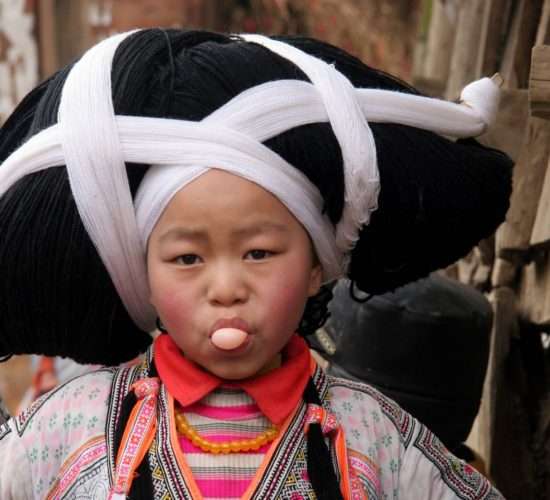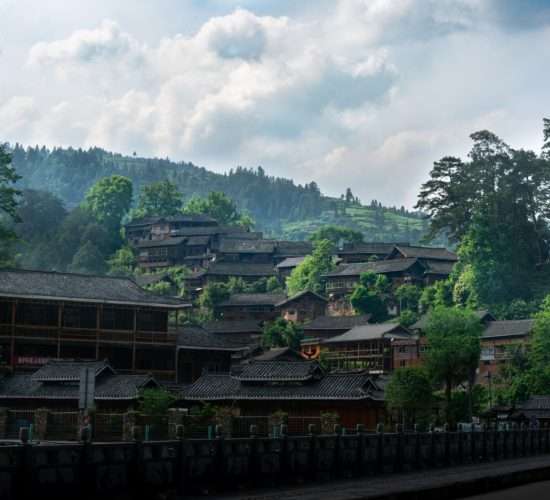With international travel likely off the cards for a good while longer, you could be forgiven for missing the thrill of discovering an exotic new locale. Thankfully, China has plenty of off-the-beaten-path corners to poke around. One that absolutely deserves to be on your radar is Guizhou.

Named one of Lonely Planet’s Best in Travel places to go in 2020, Guizhou offers travelers an untouched escape into a land truly stitched in time. With its ethnic minority villages, landscape of paddy fields and karst formations, and mouthwatering cuisine, Guizhou really does feel a world away from the urban metropolises that the majority of us spend most of our time in. Here’s why Guizhou should top your 2021 travel list.
Getting oriented in Guiyang
Any visit to Guizhou will likely start in the provincial capital, Guiyang. Over the past decade or so, high-speed rail lines have gradually connected Guiyang to most major first-tier cities in China, with trains from Shanghai and Beijing now taking about 8.5 hours and 9-11 hours, respectively.
Guiyang is the perfect jumping-off point for exploring the province’s many fascinating villages. It’s by no means the most interesting city in China, but don’t rush off without seeing a few of the sites.
Don’t miss:
- Visiting the three-story Jiaxiu Pavilion, which sits atop a boulder in the center of the city, is the symbol of Guiyang. The pavilion was originally built during the Ming dynasty in celebration of the area’s many outstanding imperial scholars
- Heading northwest of the city center to the thickly forested Qianling Park, the “lungs of the city.” Be warned that the park is home to more than 500 macaques (locals sometimes call it “Monkey Park”) — if you’re carrying any food with you, you’ll want to keep it firmly out of sight
- Making a stop at Guizhou’s oldest Zen Buddhist temple built in the latter half of the 1600s – the Hongfu Temple. Discover the Buddhist art that adorns the halls and towers, as you explore the gilded corners that make up this cultural treasure
China’s diversity in microcosm

From Guiyang, most travelers move on to the city of Kaili, the gateway to the autonomous ethnic minority prefectures and counties of the east and southeast of the province.
Guizhou is one of the most diverse provinces in China, home to 18 recognized ethnic minorities, making up close to 40% of the local population. The largest ethnic minority groups include the Miao, Dong, Bouyei (or Buyi), Yi, and Shui, along with the many subgroups of each.
Centuries of relative remoteness has preserved languages, customs, and clothing much better in Guizhou than in most other regions of China. Miao women, for example, still sport traditional hand-made embroidered clothing for everyday wear and make their own intricate silver jewelry and headpieces for special occasions.
Rural villages in Guizhou never feel empty like many other parts of rural China do nowadays and people are always welcoming. And we mean really welcoming to the point where it can be a bit overwhelming. People in Guizhou will go completely out of their way to make sure you feel at home and will ply you with local wine and snacks for as long as you’ll let them. This isn’t put on for show as some visitors think, people in Guizhou really are just that friendly.
Don’t miss:
- Meeting a Dali Dong village elder to understand the customs and history of the Dong people, among the largest ethnic groups in Guizhou
- Learning how to make a soybean-based dye used to make light blue textiles, seen among Dong women
- Spending an afternoon with a village shaman to learn about Dong spirituality, afterlife beliefs, and healing techniques
A landscape painting brought to life
These vibrant villages sit nestled among pristine natural landscapes, some of China’s most beautiful. Most of Guizhou is mountainous; a famous local saying complains that there is “not three feet of flat land.” Areas of the province are part of the UNESCO World Heritage-listed South China Karst, the limestone terrain warped over thousands of years into towering peaks and huge caves, offering plenty of opportunities for keen climbers or hikers. Don’t miss other-worldly Fanjingshan (Mount Fanjing) in the east of the province, which rises out of the surrounding hills like a finger pointing towards the sky.

Guizhou’s other most famous natural attraction is Huangguoshu Waterfall. Around 45km southwest of Anshun city (which can be reached by high-speed rail from Guiyang), the waterfall is one of the largest in East Asia, tumbling over 77m down into a deep pool. Huangguoshu is part of a cluster of 18 waterfalls, so there is plenty to explore in the area.
Don’t miss:
- Enjoying a misty sunrise over the cascading Jiabang rice terraces in Congjiang County
- Visiting Fanjingshan (Mount Fanjing) in the east of the province, which rises out of the surrounding hills like a finger pointing towards the sky
- Exploring Huanguoshu Waterfall, one of the largest in East Asia with a 77m drop and part of a cluster of 18 waterfalls
The godmother of spicy cuisines
The food of Guizhou is as much of an adventure as its mountainous countryside, characterized by one key ingredient: chilies.
Guizhou is the home province of China’s most famous chili sauce brand, Lao Gan Ma (aka “Old Godmother” sauce), which should give you an idea of how important chilies are to the local cuisine. The food in Guizhou is just as spicy as the more famous cuisines of Sichuan or Hunan, but here, the defining flavor is sour and spicy, created by the judicious use of fermented and pickled vegetables, as well as naturally sour vegetables such as tomatoes. Fish in sour soup, a specialty of Kaili that many consider to be Guizhou’s signature dish, best exemplifies these flavors.

Although dishes like fish in sour soup have come to define Guizhou cuisine, in reality, food is hyper-local, changing from one village (or even household) to the next due to the reliance on homegrown and foraged ingredients.
As a result, Guizhou cuisine hasn’t really made it big in the rest of China, let alone the world, so keen foodie travelers are bound to find local restaurants and night markets exciting.
Don’t miss:
- Enjoying a ‘vintage fish’ banquet – a Dong specialty brought out for celebrations. The dish is made of a whole fish that is carefully preserved in chilli and salt.
- Trying regional favorites, like si wa wa, pancakes wrapped around shredded vegetables and dipped in spicy sauce, and stir-fried houttuynia, the rhizome of a bitter local herb that is thought to be good for the lungs
- Pairing your meals with baijiu. While this drink is beloved nationwide, Guizhou is among the top producers of this famous spirit, including being the home of China’s most famous baijiu brand Maotai.
From food and scenery to culture and hospitality, Guizhou offers something for every traveler, especially those who are willing to stray from the beaten path. If visiting provinces like Yunnan and Guilin have been highlights of your China travel so far, then Guizhou should definitely be next on your travel list for 2021.
By Robynne Tindall










